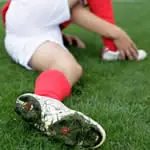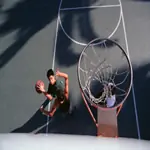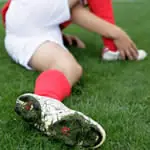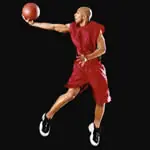Science and Simplicity
Think this is too complicated? It's about doing less, not more. Step up and shoot. That's it. While this is a combination of both neuroscience and biomechanics, it's really quite simple.
Step one is learning to shoot and mastering the muscle memory of good shooting form while under pressure. Step two is creating a simple "mantra moment" that eliminates conscious thought about the shot and becomes a trigger that allows your subconscious to access the automated muscle memory control that makes the shot.
The famous martial artist Bruce Lee said that when he started learning martial arts, "a punch was just a punch and a kick was just a kick." As he began to learn and train to get better, he said that a punch became a series of complicated things like judging attack range and proper thrust point. A kick became balance, leverage and more. However, when he truly began to master martial arts, "a punch was just a punch and a kick was just a kick," it became simple again. He described the next and highest stage of mastery by saying the "the fight is fluid movement like a dance, and when it's time -- 'it' hits -- all by itself!" (The "it" he is referring to is his fist.)
Now at this level of mastery, it was even more simple. He learned that if you allow it, your brain will cause your body to do what it needs to do both instinctively and instantly. From pianists to martial artist to NBA players, those that truly have mastered a skill have also mastered the ability to let go of conscience thought and trust their feelings. To have the best chance to make the big free throw, you must be willing to not try and just let it happen.
Does this seem too outrageous and against everything that you have been taught or currently believe? Many coaches and some players feel the need to be in control of everything and leave nothing to chance. But all of us go on autopilot and leave plenty of things to chance all the time! Here is an almost literal example of being on autopilot:
Have you ever been driving and when you reach your destination, you don't quite remember braking, steering around turns, stopping at intersections or passing certain things along the way? Your conscious cerebral cortex was "focused" on your thoughts or conversation and your subconscious cerebellum did the driving for you. Before you started driving, did you have to visualize driving to your destination? Did you tell yourself to concentrate on maintaining the proper position of your hands on the steering wheel? Probably not, because you have truly mastered this activity and left much of the driving to the autopilot in your cerebellum.
Perfect Practice
Most coaches know the adage, "practice makes perfect" and that the correct version is really "perfect practice makes perfect." Taking that a step further, the best way to learn a competitive activity is to compete while learning and practicing the activity.
Like most forms of teaching, coaching basketball is often done in progressive steps. When teaching free-throw shooting, coaches often break down various parts of the shooting motion. Form-shooting drills are very helpful, especially to warm up properly. Players also practice by taking lots of shots. The problem in making the big shot "under pressure" actually starts when you learn and practice without pressure.
The best way to prepare to make the big shot in crunch time is to learn to shoot and practice shooting under both pressure and adversity all the time. From now on, when practicing free throws, jack up the pressure and create high-tension scenarios. Do form shooting drills as well as actual free throws with some type of consequence and adversity. You must create difficult conditions in which you are shooting and have an effective and immediate consequence for not doing the drill properly or missing the shot.
- 2
- of
- 3







Discuss This Article